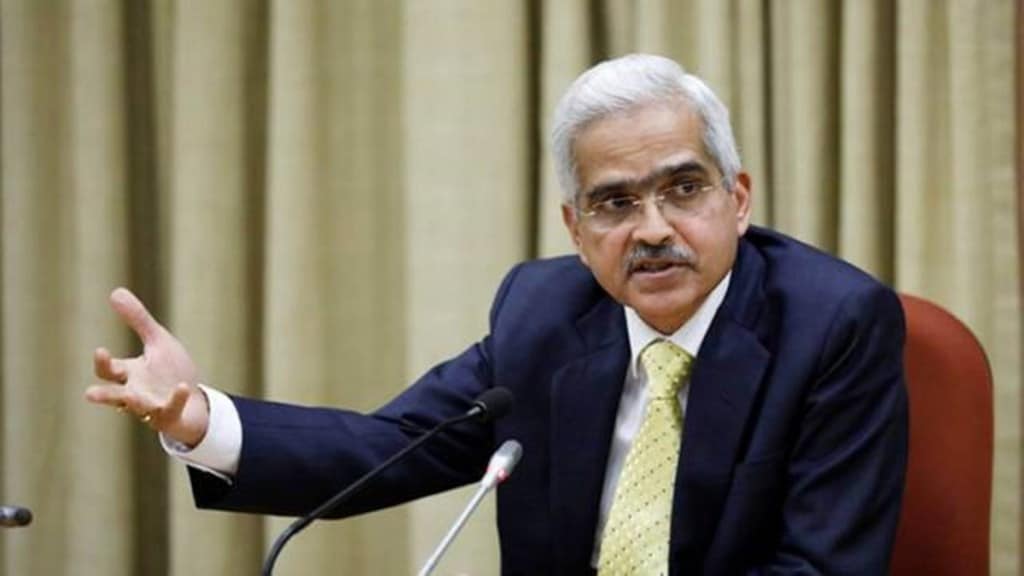Reserve Bank of India governor Shaktikanta Das is a known cricket enthusiast. So when a journalist asked him at a post-monetary policy interaction whether he would now start making strokes, Das smiled and said: “It would depend on each ball.”
That just about sums up Thursday’s monetary policy statement, which took the surprise decision to pause the rate hike cycle, but kept the window open for future increases by retaining its stance of withdrawal of accommodation to ensure that inflation aligns with the target over time, while supporting growth.
Also read: Over Rs 40,700 crore sanctioned under Stand-Up India Scheme in seven years
The Monetary Policy Committee (MPC) unanimously voted to keep the repurchase rate at 6.50%, a move expected by only six of 33 economists surveyed by Bloomberg. The decision on the rate comes after six consecutive hikes totalling 250 basis points.
Das took great pains to explain that the decision was only for this policy. “It is a pause, not a pivot. Our job is not yet finished and the war against inflation has to continue.” Reiterating the central bank’s resolve to bring inflation back within the target band of 2-6%, Das said it’s now necessary to evaluate the cumulative impact of the 250 bps in total rate increases.
India joins a few central banks in the region, including Indonesia, South Korea and Malaysia, in pausing rate hikes.
The central bank raised its growth forecast for the fiscal year starting in April to 6.5% from 6.4% earlier, while lowering its inflation forecast to 5.2% from 5.3%.
Responding to the policy, Abheek Barua, chief economist, HDFC Bank, said the unchanged stance has been justified by the still looming inflationary risks. “We expect that growth could be lower at 6% this fiscal while there are upside risks to the RBI’s inflation forecast, especially given the impending risks around oil prices and the performance of monsoons.”
Dinesh Khara, chairman, State Bank of India, termed the RBI’s decision to pause as a “pleasant surprise” and “perfectly timed”. “Overall, RBI’s April policy guides the market in terms of expectations alignment,” he said.
The Sensex rose marginally by 143 points, with interest-sensitive sectors such as BSE Realty and BSE Auto rising 2.9% and 0.9%, respectively. The 10-year bond yields fell by 10 bps after the policy announcement. However, it closed at 7.20%, down 6 bps.
Barua said, going forward, the RBI could go for “the higher for longer” narrative – staying on an extended pause in FY24 while tightening liquidity conditions. Therefore, short-term rates could remain under pressure over the coming months. For the 10-year yield, some pressure may return once the government’s borrowing programme kicks in.
Also read: Register your business with EPF online with these quick and easy steps
A Balasubramanian, managing director & CEO, Aditya Birla Sun Life AMC, said, “The RBI is addressing evolving growth concerns with equal importance of achieving financial and price stability.”
Besides keeping the policy rate unchanged, the RBI also issued a slew of other measures. These include enhancing the efficiency of the regulatory process through a secured web-based centralised portal named ‘PRAVAAH’ (Platform for Regulatory Application, Validation And Authorisation), which will gradually extend to all types of applications made to the RBI across all functions.
To improve and widen the access of depositors/beneficiaries, the RBI has decided to develop a web portal to enable search across multiple banks for possible unclaimed deposits based on user inputs. The search results will be enhanced by the use of certain artificial intelligence tools.
In addition, credit information companies (CICs) have been brought under the RBI’s ombudsman scheme and a comprehensive mechanism is being proposed whereby there will be a provision of email/SMS alerts to customers when their credit information is accessed.
Also, the scope of the unified payments interface (UPI) will be expanded by enabling transfer to/from pre-sanctioned credit lines at banks. That is, the UPI network will facilitate payments financed by credit from banks.
With a view to developing the onshore rupee non-deliverable derivatives contracts (NDDCs) and to provide residents with the flexibility to efficiently design their hedging programmes, it has been decided to permit banks with IFSC Banking Units to offer rupee NDDCs to resident users in the onshore market.
“The bouquet of regulatory initiatives like linking UPI to credit and developing the onshore market will spur innovations in product offerings. The decision to enable tracing unclaimed deposits and strengthening of grievance redressal is customer-centric,” added Khara.


